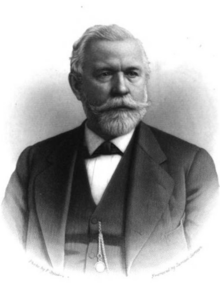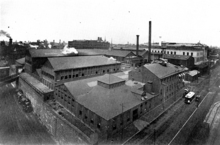This article needs additional citations for verification. Please help improve this article by adding citations to reliable sources. Unsourced material may be challenged and removed. Find sources: "William Sellers" – news · newspapers · books · scholar · JSTOR (May 2020) (Learn how and when to remove this message) |
William Sellers | |
|---|---|
 Sellers in 1884 | |
| Born | September 19, 1824 Upper Darby Township, Pennsylvania |
| Died | January 24, 1905(1905-01-24) (aged 80) Philadelphia, Pennsylvania |
| Known for | proposing United States standard system of screws, threads, and nuts |
| Spouses |
|
| Signature | |
 | |
William Sellers (September 19, 1824 – January 24, 1905) was a mechanical engineer, manufacturer, businessman, noted abolitionist, and inventor who filed more than 90 patents, most notably the design for the United States standard screw thread, the standard bolt and machine screw thread still used today. As president of the Franklin Institute in Philadelphia, Pennsylvania, Sellers proposed the adoption of a system of screw threads which was easier for ordinary mechanics and machinists to cut than a similar design by Joseph Whitworth. For many years, he led the machine tool firm of William Sellers & Co., which was a very influential machine tool builder during the latter half of the 19th century.
